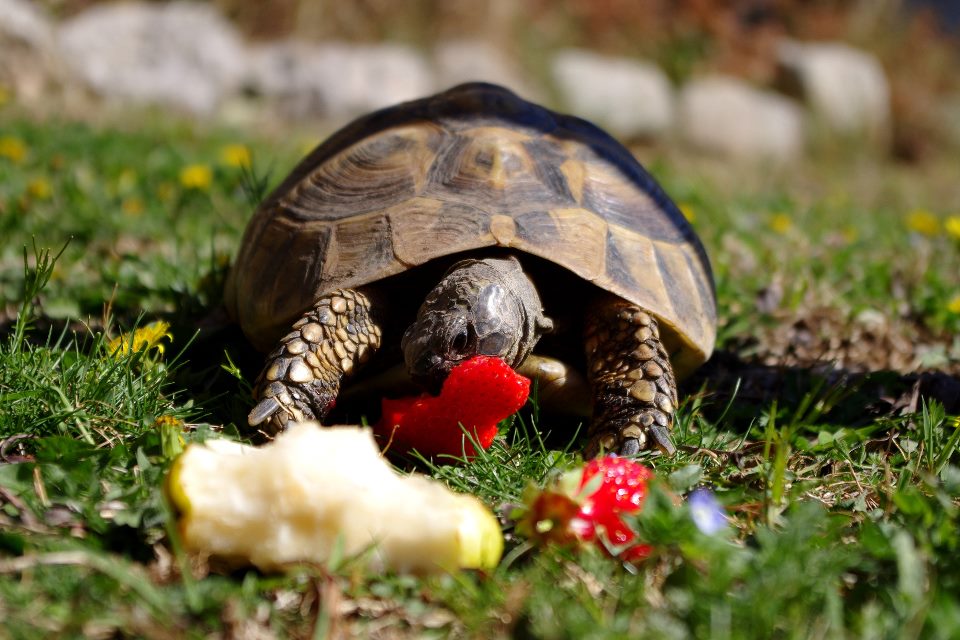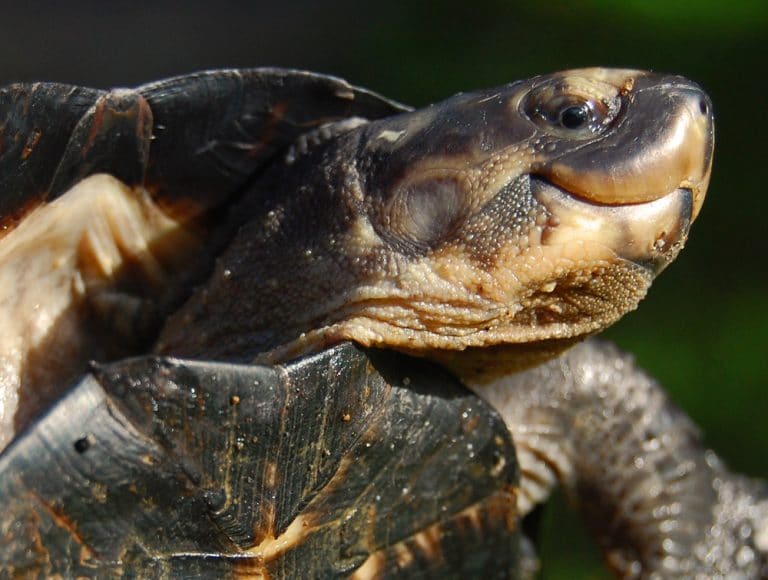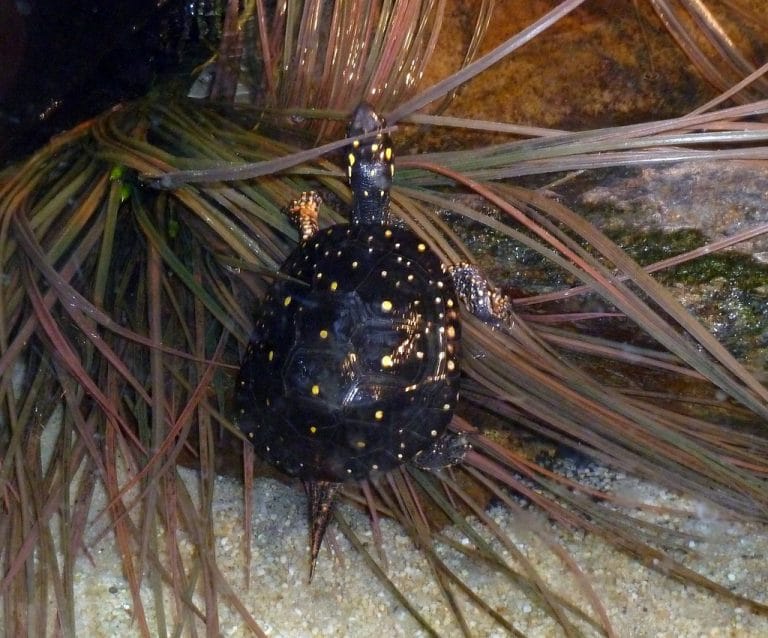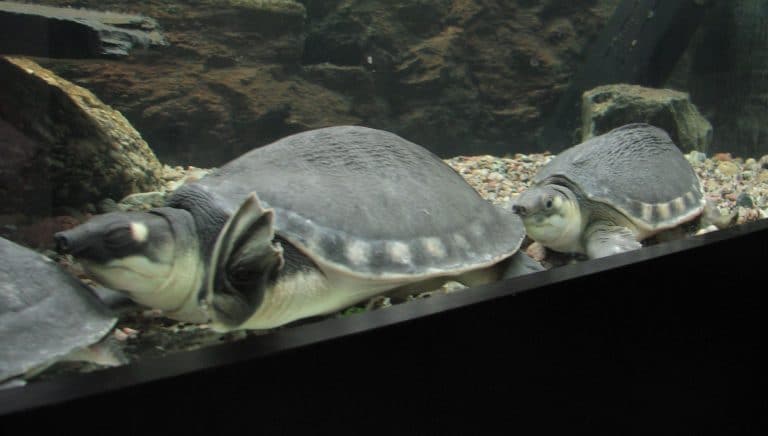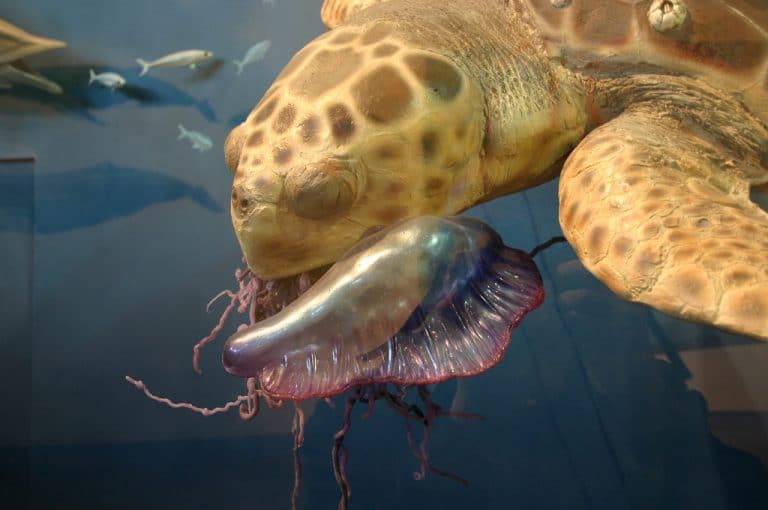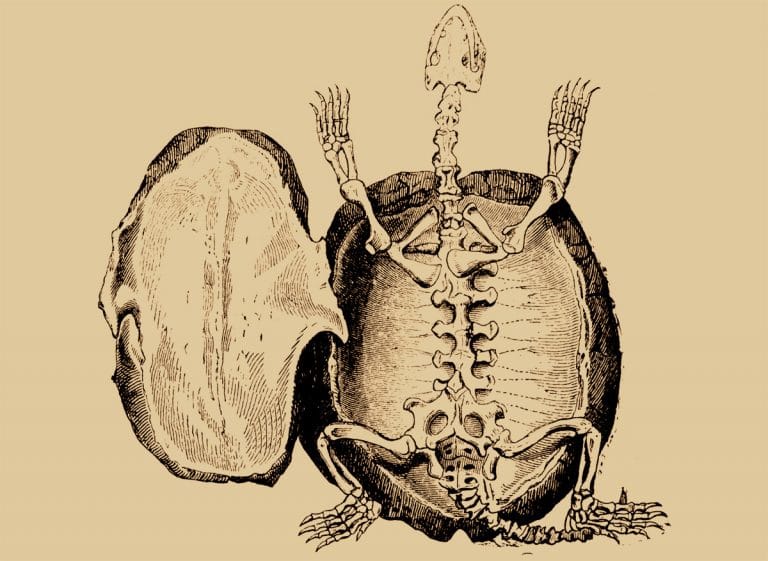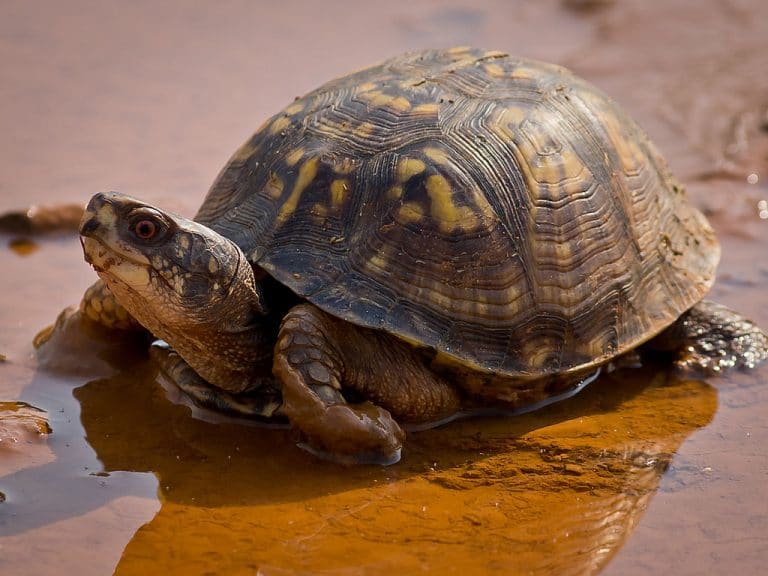What do Turtles Eat?
Most Turtles are good as pets. They are herbivorous, omnivorous, or carnivorous. Given below are guidelines on their diet: Turtles are reptiles; as such, they are ectothermic or ‘cold-blooded’, just as reptiles are. In addition, turtles come under the amniotes classification. They breathe air and do not lay eggs underwater. The aquatic turtles represent their largest sizes. Fundamentally, there exist three varieties of turtles: Carnivores that feed on meat, herbivores that consume mainly plants and vegetation; and omnivores, that consume both meat and plants.
Adaptation of Turtles for Food
Turtles have diverse adaptations of their mouths and jaws to suit their diet. For example, the Green sea turtles have teeth like serrated edges in a beak-like appendage that facilitates them comfortably to tear into seagrass and scrape algae from hard rock surfaces. You can notice pointed, sharp cusps in the Leatherbacks mouths that help them to hold on to their main food, the jelly fish, apart from which you can also see inward curving papillae (teeth) that help to move the prey downwards into the stomach. The Loggerheads come with hard muscular jaws that can mash hard-shelled mussels and conchs.
Turtle Diet
First, verify which variety of turtles you are administering food. The turtle’s natural home not only decides its type of food intake, but also the other aspects of its care. For instance, the American Box Turtle is omnivorous, feeds on almost anything that is available, the Malayan Box Turtle needs a little quantity of flesh and great amount of plants, The map turtle prefers meat. The River Cooter’s food chiefly consists of plants; the Chinese 3-striped Box Turtle prefers to eat flesh most of the time. Then you have the Red-eared Slider that it initially eats bugs and worms, but as it grows up it becomes an omnivore.
To ensure that your turtle remains pleasant and healthy, the first method is to provide it with sufficient quantity of natural food. Depending on the season, turtles consume various types of food in the wild; therefore, the main factor in feeding your turtle is variety.
Provide them Calcium
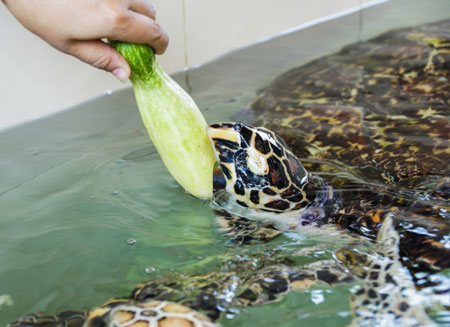
Food products rich in minerals and vitamins are essential for the turtles. Give your turtles minerals such as calcium, phosphorus, vitamin D3 and other minerals that are the essential factors of good health. However, the majority of the food they consume contains phosphorus, so the supply of phosphorus is sufficient. Concentrate on their intake of calcium. The various sources from which calcium is available are: boiled and crushed eggshells, pulverized oyster shells, cuttlebone and plaster block.
Calcium alone is not the important factor; for the facile absorption of calcium into the body, the presence of vitamin D3 is very essential. The body of the turtle generates Vitamin D3 when it has exposure to direct sunlight or good quality reptile light, for instance Reptisun or Reptile D-light. Otherwise supplement, Vitamin D3 along with their food.
Be sure that your turtle does not consume too much of food containing a high content of oxalic acid, that restricts the absorption of calcium. However, because being natural vermifuges, they benefit to a certain extent. Deficiency of iodine is a possibility if they eat more cabbage that contains goitrogens. However, since cuttlebone has only mild quantity of iodine, so supplying them with this reduces the problem.
Restrict Protein
Deformities like pyramiding in the turtle’s shell are a result of excess of proteins in its food, which leads to stress in the kidneys. Therefore, you would do well not to increase the protein content in the food of your turtle by feeding them with meat, dog food, cat food or food that humans consume.
A limited quantity of proteins along with the diet is harmless. But avoid it as a staple food. Give your turtle a variety of food items, avoid excess of any one type of food. Since plants contain proteins, turtles get required proteins from them.
Say No To Raw Hamburgers
Breeders of turtle, in particular children, take a fancy in sharing their preferred snack with their pets. Turtles are omnivorous, that is a fact, and do not come to the conclusion that their diet is the same as that of yours, your dogs or cats!. Not at any time do you feed your turtle with hot dogs, hamburger and other junk food, which you prefer munching. Remember your turtle’s life is important to you.
Omnivorous Turtles Diet
You can see below a list of turtle’s food. Be certain that you give your own pet turtle the food that differs according to their species.
Proteins
Turtles never fail to feed on tiny animals in their natural habitat. Give your pet, cooked fish, turkey or chicken, boiled eggs, wax worms, shrimps, mealworms, snails, slugs, earthworms, crickets and silkworms. You better not feed them with cat food, dog food or lean beef. Never feed them with raw meat, this causes infection. Avoid fatty food like hamburgers.
Leafy vegetables:
For vegetables, you can feed them with sow thistle, fig leaves, tufted vetch, grape leaves, turnip green, endive, lettuce-both red and green, red clover, dandelion, plantain weed, collards, chickweed, and aquatic plants such as duckweed, water lettuce and the like. Carrot tops are also their favorite, so never miss it as a treat.
Vegetables:
Besides leafy items, provide your pet with wax bean, sweet potatoes, corn, green beans, okra, beets, squashes and green peas.
Flowers:
Flowers are also their favorite; in their diet, include rose, chives, petunia, dandelion, lilies, pansies, hibiscus, borage, carnations, geraniums, hyssop and nasturtium.
Fruits:
Compliment their diet with fruits:
Feed your pet turtles with tomato, kiwi, banana, blackberries, mango, apple, cantaloupe, grapes, strawberry, blueberry, figs, and citrus fruits.
Supplements and commercial food is available for your turtles.
Foods That Turtles Should Avoid
Turtles do not possess the enzymes needed for splitting up lactose; they are incapable of digesting milk products, hence avoid dairy products such as cheese and yoghurts to your turtles. Canned food and processed foods have a high content of salt and preservatives and their effects on the turtles are not completely known. Do not give your turtles such food, limit their quantities. Although turtles do consume poisonous plants in their natural environment, one is not aware of their specific feeding habits; therefore, as a precaution, never have poisonous plants near these turtles. Plants such as rhubarb, avocado, and poisonous ivy are poisonous plants. Prior to feeding your turtle, determine its variety. A wrong kind of food leads to sickness. Make a note of the feeding habits given above.

Having discovered a fondness for insects while pursuing her degree in Biology, Randi Jones was quite bugged to know that people usually dismissed these little creatures as “creepy-crawlies”.

